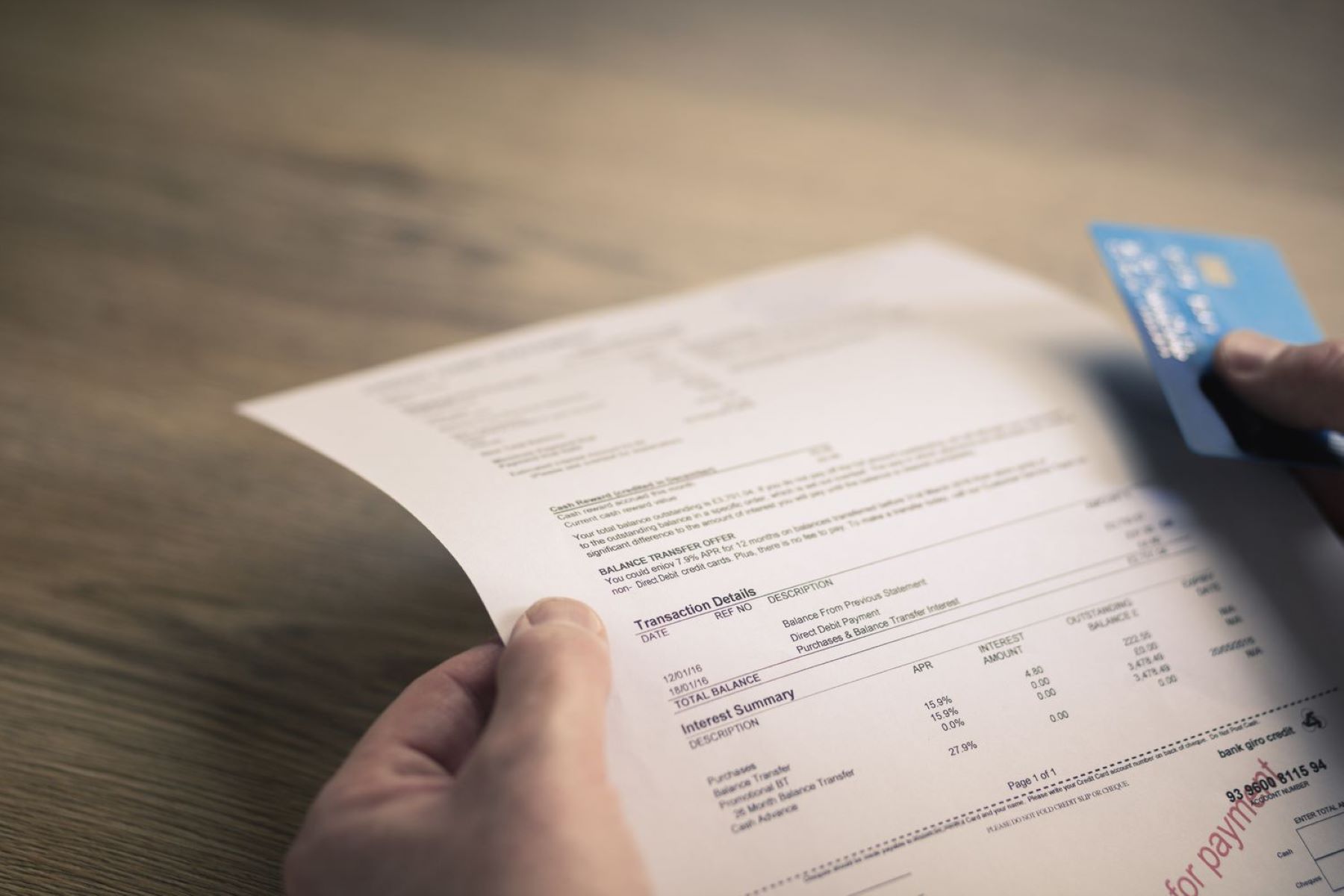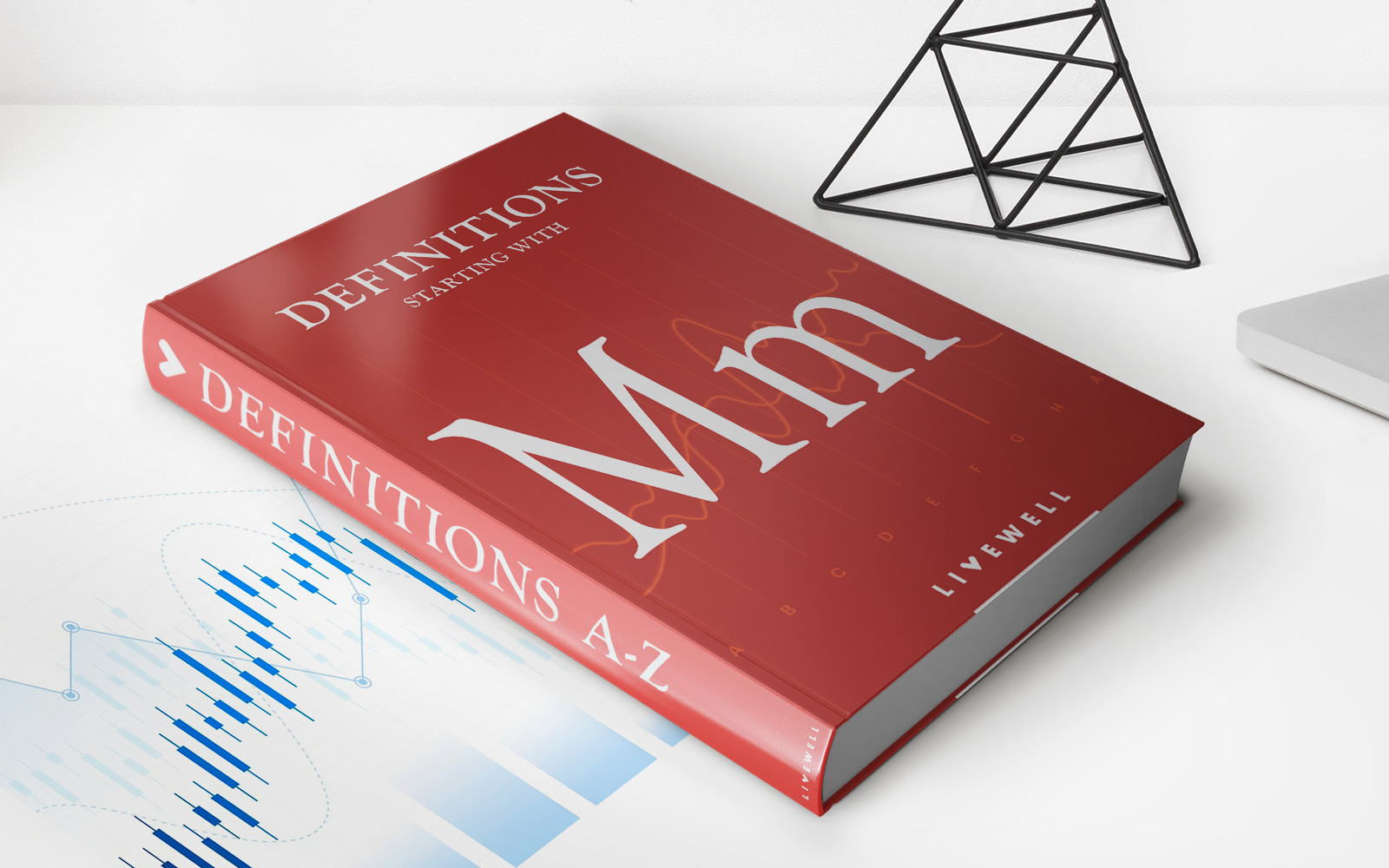

Finance
What Is AMDA Charge On Credit Card
Modified: December 30, 2023
Learn about the AMDA charge on your credit card and its implications for your finance. Understand how this fee affects your overall financial transactions.
(Many of the links in this article redirect to a specific reviewed product. Your purchase of these products through affiliate links helps to generate commission for LiveWell, at no extra cost. Learn more)
Table of Contents
Introduction
Welcome to the world of credit cards, where convenience meets financial responsibility. Credit cards offer a multitude of benefits, from the ability to make purchases online to earning rewards on everyday transactions. However, with the convenience comes a myriad of charges and fees that can sometimes leave cardholders scratching their heads.
One such charge that often raises questions is the AMDA charge. What exactly is it, why is it on your credit card statement, and how does it impact your finances?
In this comprehensive guide, we will delve into the world of AMDA charges, demystifying this often misunderstood credit card charge. By the end, you’ll have a clear understanding of what AMDA charges are, why they appear on your statement, and what steps you can take to effectively manage and avoid them.
So, whether you’re a seasoned credit card user or just starting your financial journey, read on to discover the ins and outs of AMDA charges and how they can impact your credit card experience.
Understanding Credit Card Charges
Before we dive into the specifics of AMDA charges, let’s first gain a general understanding of credit card charges as a whole. When you use your credit card for purchases or other transactions, there are various fees and charges that may be associated with it.
One common charge is the annual fee, which is an amount charged by the credit card issuer for the privilege of using their card. Annual fees vary depending on the type of card and the benefits it offers. Another common charge is the interest rate, which is the cost of borrowing money from the credit card issuer if you carry a balance from month to month.
In addition to these charges, there are other fees that can be incurred, such as foreign transaction fees, balance transfer fees, cash advance fees, late payment fees, and over-limit fees. These charges can significantly impact your overall credit card cost if not managed effectively.
Now that we have a general understanding of credit card charges, let’s move on to the topic at hand – AMDA charges.
What is AMDA Charge?
AMDA (which stands for Automated Minimum Due Amendment) charge is a type of fee that may appear on your credit card statement. This charge is typically applied when you make a payment on your credit card that is less than the minimum amount due.
When you receive your credit card statement, it will clearly state the minimum amount that you are required to pay in order to keep your account in good standing. This minimum payment is usually a small percentage of your outstanding balance or a fixed amount, whichever is higher.
If you make a payment that is less than the minimum amount due, the credit card issuer may apply an AMDA charge to your account. This charge is essentially a penalty for not meeting your minimum payment obligation. It serves as a way for credit card issuers to offset the cost of managing delinquent accounts and encourage responsible payment behavior.
It’s important to note that the AMDA charge is separate from the interest charged on your outstanding balance. Interest is a cost that accrues over time on any unpaid balance, whereas the AMDA charge is a one-time fee for not meeting the minimum payment requirement.
Now that we understand what an AMDA charge is, let’s explore why it might appear on your credit card statement.
Why is AMDA Charge on My Credit Card?
If you notice an AMDA charge on your credit card statement, it means that you have made a payment that is less than the minimum amount due. There can be several reasons why this might occur:
- Insufficient Funds: One common reason for an AMDA charge is simply not having enough funds to make the full minimum payment. This can happen due to unexpected expenses, financial difficulties, or poor budgeting.
- Miscommunication: In some cases, the AMDA charge may be a result of miscommunication or misunderstanding regarding the minimum payment amount. It’s important to carefully review your credit card statement and payment instructions to avoid any confusion.
- Payment Delay: If your payment is delayed for any reason, such as a lost mail or technical issues with the payment provider, it could result in a late payment, triggering the AMDA charge.
- Payment Allocation: Credit card issuers have their own policies on how they allocate payments when you have different balances, such as purchases, cash advances, or balance transfers. If your payment is not allocated towards the minimum payment, you may still incur an AMDA charge.
While an AMDA charge is certainly an inconvenience and an added expense, it is important to understand that credit card issuers have the right to impose this fee as stipulated in your cardholder agreement. It is their way of ensuring that cardholders meet their financial obligations and prevent delinquency.
Now that we know why an AMDA charge may appear on your credit card statement, let’s explore how it impacts your credit card and overall financial health.
How Does AMDA Charge Impact My Credit Card?
When an AMDA charge is applied to your credit card, it can have several implications for your overall credit card and financial health:
- Increase in Balance: The AMDA charge will be added to your outstanding balance, increasing the amount you owe on your credit card. This can lead to higher interest charges if you carry a balance from month to month.
- Additional Fees: In addition to the AMDA charge, credit card issuers may also apply late payment fees or other penalties for not meeting the minimum payment requirement. These fees can further increase your overall credit card cost.
- Impact on Credit Score: A missed or late payment, which triggers the AMDA charge, can have a negative impact on your credit score. Payment history is a significant factor in determining your creditworthiness, and consistently making late or insufficient payments can lower your credit score.
- Reduced Credit Card Limit: Credit card issuers may lower your credit limit or restrict your card usage if you consistently fail to meet the minimum payment requirement. This can affect your available credit and borrowing capacity.
- Limited Access to Credit: If you accumulate multiple AMDA charges and other negative payment history, it can make it harder for you to qualify for new credit cards or loans in the future. Lenders may view you as a higher credit risk and be hesitant to extend credit to you.
It’s important to note that the impact of an AMDA charge on your credit card and creditworthiness will depend on various factors, including the severity of the delinquency, the frequency of missed payments, and your overall credit history.
Now that we understand how an AMDA charge can impact your credit card, let’s explore some strategies for effectively managing and avoiding these charges.
How to Deal with AMDA Charges
While it’s best to avoid AMDA charges altogether by making your minimum payments on time and in full, sometimes unforeseen circumstances can lead to a missed or insufficient payment. If you find yourself facing an AMDA charge, here are a few steps you can take to deal with it:
- Review Your Credit Card Statement: Carefully review your credit card statement to understand why the AMDA charge was applied. Make sure you are aware of the minimum payment amount and the due date.
- Contact Your Credit Card Issuer: Reach out to your credit card issuer promptly to explain your situation. In some cases, they may be willing to waive or reduce the AMDA charge as a gesture of goodwill. Be polite and explain any extenuating circumstances that led to the missed payment.
- Make the Minimum Payment: Pay the minimum amount due as soon as possible to bring your account back into good standing. This will help prevent further fees and penalties from accumulating.
- Set Up Payment Reminders: Avoid future missed payments by setting up payment reminders through your credit card issuer’s online banking or using smartphone apps. This will help you stay on top of payment due dates.
- Consider a Payment Plan: If you’re experiencing financial hardship and are unable to pay the full minimum amount, contact your credit card issuer to discuss possible payment plans or hardship programs. They may be willing to work with you to create a more manageable repayment schedule.
Remember, communication is key when dealing with AMDA charges. Reach out to your credit card issuer proactively to find a solution that works for both parties and avoids further financial strain.
Now that you know how to handle AMDA charges, let’s explore some proactive tips to help you avoid these charges in the first place.
Tips for Avoiding AMDA Charges
Prevention is always better than cure, and when it comes to AMDA charges, it’s best to avoid them altogether. Here are some actionable tips to help you steer clear of AMDA charges:
- Set Up Auto-Payments: Take advantage of your credit card issuer’s automatic payment feature. By setting up auto-payments, your minimum payment will be deducted from your bank account on the due date, ensuring you never miss a payment.
- Pay More than the Minimum: While the minimum payment is the minimum required to avoid penalties, it’s always advantageous to pay more if you can afford it. By paying more than the minimum, you can reduce your outstanding balance and save money on interest charges.
- Create a Budget: Track your expenses and income to create a realistic budget. Allocate funds specifically for credit card payments and ensure you have enough to cover the minimum amount due each month.
- Monitor Your Credit Card Spending: Regularly review your credit card transactions to stay informed about your spending patterns and identify any potential issues or discrepancies. This will help you take proactive action if you foresee any challenges in making your minimum payment.
- Consider Payment Reminders: Set up payment reminders through your credit card issuer’s online banking platform or use smartphone apps to receive notifications about upcoming payment due dates. This will help you stay organized and ensure timely payments.
- Communicate with Your Credit Card Issuer: If you’re facing financial difficulties or anticipate challenges in meeting the minimum payment, proactively reach out to your credit card issuer. They may offer assistance or suggest alternative payment arrangements to help you avoid AMDA charges.
By implementing these tips into your financial routine, you can maintain a healthy credit card account and minimize the risk of incurring AMDA charges.
Now let’s summarize what we’ve covered so far.
Conclusion
Understanding credit card charges is vital for every cardholder to effectively manage their finances. The AMDA charge, or Automated Minimum Due Amendment, is a fee that can be applied when you fail to make the minimum required payment on your credit card.
In this guide, we have explored what an AMDA charge is, why it may appear on your statement, and the impact it can have on your credit card and overall financial health. We provided guidance on how to deal with AMDA charges, including reviewing your statement, contacting your credit card issuer, and making the minimum payment promptly. We also shared tips for avoiding AMDA charges, such as setting up auto-payments, paying more than the minimum, and creating a budget to manage your expenses.
By being proactive and staying informed, you can effectively manage your credit card payments and avoid the inconvenience and additional costs associated with AMDA charges. Remember to communicate with your credit card issuer if you encounter any challenges, as they may be able to offer assistance or provide alternative payment arrangements.
Now that you have a clear understanding of AMDA charges and how to handle them, you can navigate the world of credit cards with confidence, making informed decisions to optimize your financial well-being.














